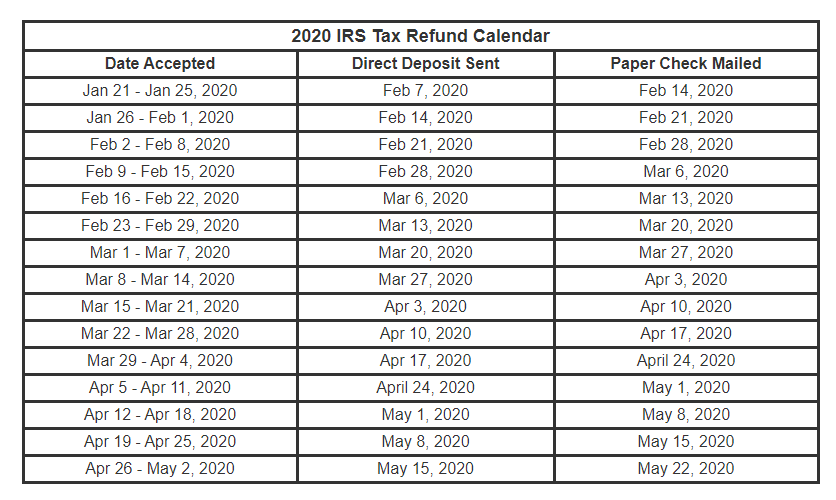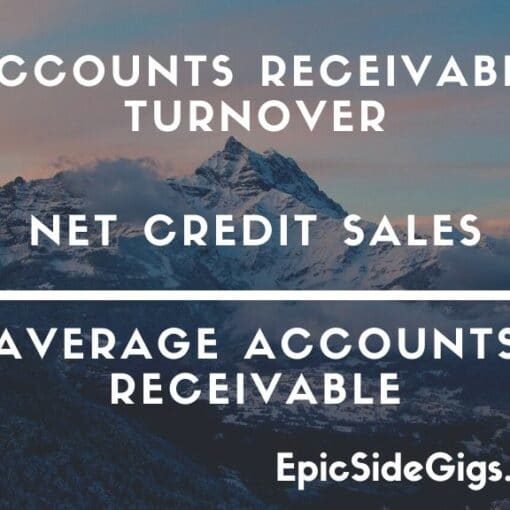Congress passed a law that requires the IRS to hold all tax refunds that include the Earned Income Tax Credit (EITC) and Additional Child Tax Credit (ACTC). This hold will delay any refund until February 15, 2020, regardless of how early the tax return was filed. Even if you file on the first day, you might still be waiting until The end of February 2020 for your refund. The IRS cannot issue these refunds before mid-February. As a result, the earliest EITC/ACTC related refunds can only be expected later in February. Keep in mind it can even be later if the taxpayers did not choose direct deposit for the refund. This also assumes there are no other issues with the tax return.
The goal of this delay is to give the IRS time to ensure no duplicate returns are filed to minimize fraud. Unfortunately, the IRS will be holding your entire tax refund, not just the EITC or ACTC part.
How Can You Check Your Federal Tax Refund Status?
Once you have filed your federal income taxes and expect to receive a refund, you can track its status. Have your Social Security number, filing status, and the exact whole dollar amount of your refund ready.
IRS Refund Schedule 2020 – How to Check Your Refund Status
Use the Where’s My Refund page or the IRS2Go mobile app to check your refund online. This is the fastest and easiest way to track your refund. The systems are updated once every 24 hours. You can even call the IRS by phone, but this is not recommended. Wait times to speak with a representative can be long. But, you can avoid the wait entirely by using the online tool or mobile app to check.
When to Expect Your Refund – IRS Refund Schedule 2020
Refunds are generally issued within 21 days of when you electronically filed your tax return or 42 days of when you filed paper returns. At the 21 day mark, you should either see a message that says approved or you need to take action. If you’re approved, you should see the approval date listed there. You can expect to receive your direct deposit in your account within a few days of that date – depending on your bank. If you see a take action message, you may be subject to a tax offset or another issue.
Undelivered and Unclaimed Federal Tax Refund Checks
Every year, the Internal Revenue Service has millions of dollars in tax refunds that go undelivered or unclaimed.
Undelivered Federal Tax Refund Checks
Refund checks are mailed to your last known address. If you move without notifying the IRS or the U.S. Postal Service (USPS), your refund check may be returned to the IRS.
If you were expecting a federal tax refund and did not receive it, check the IRS’ Where’s My Refund page. You’ll need to enter your Social Security number, filing status, and the exact whole dollar amount of your refund. You may be prompted to change your address online.
IRS Refund Schedule – Is Your Tax Refund Lower Than Expected?
If you owe money to a federal or state agency, the federal government may use part or all of your federal tax refund to repay the debt. This is called a tax refund offset.
How the Treasury Offset Program Works
- The Bureau of Fiscal Services (BFS) will check if your name and taxpayer information are in its delinquent debtor database.
- If there is a match, BFS will notify you that it is deducting the amount you owe from the payment you were going to receive.
- BFS will send the outstanding amount to the federal or state government agency to which you owed the money.
If you owe more money than the payment you were going to receive, then BFS will send the entire amount to the other government agency. If you owe less, BFS will send the agency the amount you owed, and then send you the remaining balance.
For example, let’s say you were going to receive a $2,000 federal tax refund. Unfortunately, you are delinquent on a student loan and have $1,000 outstanding. BFS will deduct $1,000 from your tax refund and send it to the proper government agency. It will also send you a notice of its action, along with the remaining $1,000 that was due to you as a tax refund.
For more information, check out the Treasury Offset Program (TOP)
What Should You Do With Your Tax Refund?
Once you receive it, use your refund wisely. Do you have pressing financial obligations? Is your emergency fund all it can be? Do you have credit card debt rolling over each month? You should consider using at least some of that money to help reach your financial goals. A first priority is to pay off credit card balances and manage debt. Consider your financial goals for the coming year and let your tax refund help you reach them.
If you are expecting a tax refund, consider these five tips and use it wisely:
When You Get A Tax Refund – Use it Wisely
- Pay down credit card debt. First, attack the card with the highest interest rate. If you can pay off the card in full, that is even better.
- Build up an emergency fund. Put some of that tax refund into savings. Even a modest amount — as little as $500 — can help provide a cushion for unexpected expenses. If you already have an emergency fund, great! Give yourself extra breathing room and try to put away three-to-six months living expenses.
- Invest in a retirement plan. Invest in your future now by using your tax refund to fund a tax-deferred retirement plan. If you alresdy have an Individual Retirement Account (IRA), make a one-time, sizable contribution. Another option is to save your tax refund. Then make a series of smaller investments over several months.
- Prepay your mortgage or loans. Some homeowners have hefty monthly mortgage payments. Making an extra payment can give you added breathing room. Also, an extra mortgage payment once each year can cut a 30 year mortgage in half. That is a great strategy for using your tax refund to pay ahead. Non-homeowners can contribute to car loan or student loan payments. Maybe even prepay on your insurance premium. This is important if you lack self-discipline and are tempted to blow it all away.
- Make needed repairs to your car and your home. Spend your tax refund on costly, but necessary, repairs to your home or vehicle. Replace that leaky roof or buy new tires for your car.
If you’ve covered all of the above, then reward yourself — but do so responsibly. Spend your tax refund on a well-deserved vacation or buy yourself that cool new electronic device you have had your eye on. Just be sure to indulge responsibly – and find the best deal.
Why Are You Getting a Tax Refund in the First Place?
Tax refunds call for a celebration, right? I mean, the average refund given out in April 2019 was over $2,700. In reality, tax refunds often mean that you made a mistake by paying more income tax than was necessary. Taxpayers receive a refund at the end of the year when they have too much money withheld.
How does this happen? If you work for an employer, you were required to fill out a W-4 form when you were hired. On that form, you indicated the amount of taxes that needed to be withheld from each paycheck. If you’re self-employed, you get a tax refund when you overpay your estimated taxes. While you might consider this extra income to be free money, it’s actually more of a loan that you made to the IRS without charging interest.
For some people, this extra money at the end each year is like a forced savings plan. If you lack the discipline to save, then this might be a viable option for you. However, maybe you could put that extra money to better use each paycheck instead. If yes, consider adjusting your W-4 witholdings to properly reflect your actual tax liability.
IRS Refund Schedule 2020 – Final Thoughts
Getting a tax refund is exciting. Many even look at it as a gift from the IRS and the Federal Government. Of course, it’s easier to accept a refund rather than update your W-4 form. But, you might actually be better off having the correct amount withheld from your paycheck each month. You could be better off – even if you don’t receive a refund at all.
Do you have student loans to pay off, or do you consistently carry a balance on your credit cards? Then, you could use the money that you normally overpay in tax withholding to pay down those debts. That way, you owe less interest over time – and interest can get expensive. Also, don’t be afraid that you’ll end up having to pay the government at the end of the tax year. There is a withholding calculator on the IRS website that can tell you the exact amount that needs to be withheld each paycheck. That’s worth checking into, right?
Update Your W-4 in 2020
If you’re getting huge refunds each year, consider tweaking your withholding on your W-4 employment form. Be sure to make adjustments for life changes, such as new dependents or a change in marital status. Keep in mind that a new form W-4 is being rolled out for use in 2020. It will ask for more information than previous forms did. Nevertheless, if you have to update your W-4 anyway, why not make it accurately reflect your proper tax withoudings as well?
 IRS Refund Schedule 2020
IRS Refund Schedule 2020

 Filing your return electronically (“e-filing”) lets the IRS streamline your refund process. The refund is issued within 21 days in most cases. Also, you really don’t want to wait for a paper refund check to find its way through the U.S. Postal Service. To get your refund as soon as possible, choose direct deposit so the money goes right into your bank account. The IRS will notify you when it gets your return, when it approves your return and when your money is on the way.
Filing your return electronically (“e-filing”) lets the IRS streamline your refund process. The refund is issued within 21 days in most cases. Also, you really don’t want to wait for a paper refund check to find its way through the U.S. Postal Service. To get your refund as soon as possible, choose direct deposit so the money goes right into your bank account. The IRS will notify you when it gets your return, when it approves your return and when your money is on the way.


